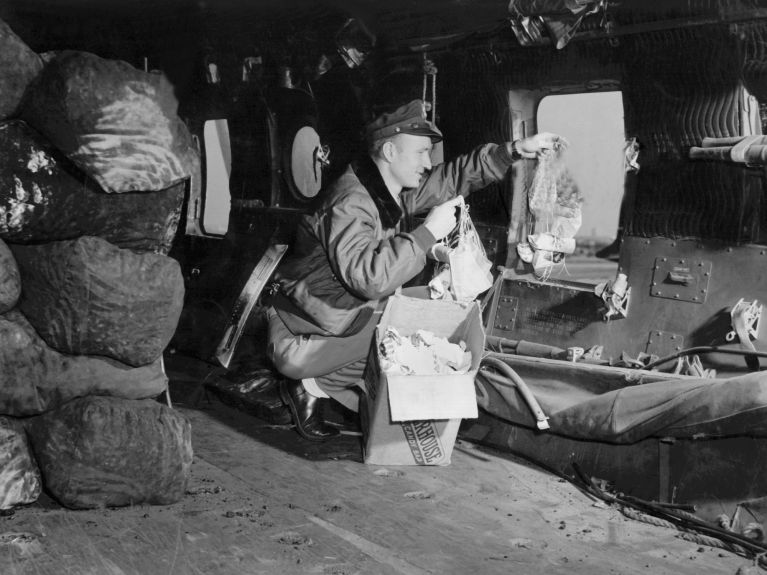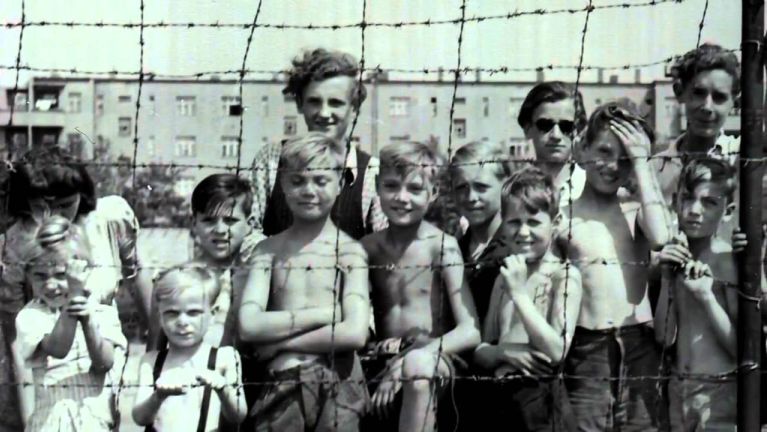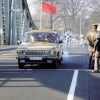70th anniversary of the Berlin Airlift
How “candy bombers” defended the freedom of West Berlin and laid the foundation for transatlantic friendship.

The sky above Berlin was full of aeroplanes. This time, however, three years after the end of the Second World War, the roar of their engines did not signal disaster for the people of Berlin – but their salvation. American and British planes brought food and coal to the city’s blockaded western sector.
The blockade of West Berlin
When the war ended, the allied forces of the USA, the United Kingdom, France and the Soviet Union divided Germany and its capital Berlin into four administrative zones. When the Western powers pushed through a currency reform and introduced the deutschmark in 1948 against its will, the Soviet Union sealed off the western sector of Berlin on 24 June 1948. The Cold War had begun.
Dieses YouTube-Video kann in einem neuen Tab abgespielt werden
YouTube öffnenThird party content
We use YouTube to embed content that may collect data about your activity. Please review the details and accept the service to see this content.
Open consent formAn idea that was to save the city: an airlift
The supply of food and energy, which was tight in any case, threatened to collapse altogether. The people of Berlin would starve. Lucius D. Clay, the military governor of the American occupation zone, took action and initiated the Berlin airlift. On 26 June, the first supply flights set off from Frankfurt am Main and Wiesbaden to Berlin.
An impressive logistical feat
It quickly became clear that as many planes as possible would need to land in Berlin in order to supply over two million people in the western part of the city. The Allies used their three air corridors at maximum capacity. The “raisin bombers” landed at one-minute intervals, were unloaded at lightning speed and then took off again. This meant that around 5,000 tons of aid could reach the blockaded sector each day.

Why were they called “candy bombers”?
US Lieutenant Gail Seymour Halvorsen would drop packages of sweets to cheer up the children in the war-torn city. Other pilots picked up on his idea and followed suit. By the end of the blockade, around 23 tons of sweets had reportedly rained down on Berlin.

Long-lasting airlift
The Western allies kept the airlift going for an entire year. It is thought to be one of the biggest humanitarian operations ever organised. The Soviet Union ended the blockade on 12 May 1949, though American and British pilots continued to fly aid shipments in until the autumn.
Enemies become friends
The Berlin Airlift gave rise to close ties between Germany and the USA, the United Kingdom and France. Wartime enemies became saviours, partners and friends. This special relationship continues to shape the transatlantic partnership between Germany and the USA to this day.
How is the Berlin Airlift to be commemorated?
The airlift will be re-enacted in June 2019 – with care parcels, sweet drops and air displays. The plan is for around 40 “candy bombers” to fly over Berlin once again.





